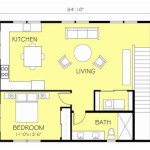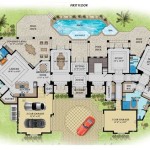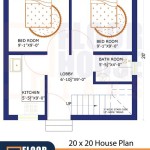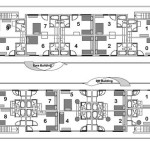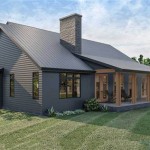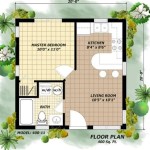House Plans By Lot Size: A Comprehensive Guide
Selecting the appropriate house plan involves careful consideration of numerous factors, one of the most critical being the size of the building lot. The dimensions of the lot dictate the maximum footprint of the house, influencing the design choices and overall livability of the space. This article provides a comprehensive guide to understanding house plans based on varying lot sizes, highlighting key considerations for optimal design and functionality.
Understanding Lot Dimensions and Setbacks
Before selecting a house plan, it is imperative to understand the precise dimensions of the building lot. This includes width, depth, and any irregularities in shape. Equally important is knowledge of local zoning regulations, which dictate required setbacks. Setbacks define the minimum distance a structure must be from property lines, streets, and other buildings. These regulations directly impact the buildable area and influence the feasible size of the house plan.
Setback requirements often vary based on zoning classifications, which may include residential, commercial, or mixed-use zones. Understanding the specific zoning for the lot is essential for determining the allowable building envelope. Ignoring these regulations can lead to costly delays or even legal issues during the construction process. Consult with local planning authorities or a qualified surveyor to obtain accurate information about lot dimensions and applicable setback requirements.
Accurately measuring the lot is also crucial. Using a professional surveyor will provide a precise representation of the property boundaries, including any easements or rights-of-way that may further restrict the buildable area. Easements grant specific rights to third parties to use a portion of the property for purposes such as utilities or access. Understanding these encumbrances is necessary to avoid conflicts during construction and ensure compliance with legal requirements.
In addition to horizontal dimensions, consider the topography of the lot. Slopes and variations in elevation can significantly impact the design and construction of the house. Steep slopes may require additional excavation and foundation work, potentially increasing construction costs. Conversely, a relatively flat lot offers greater flexibility in design and simplifies the building process. A geotechnical survey can assess soil conditions and provide valuable information for foundation design.
House Plans for Smaller Lots (Under 5,000 sq ft)
Building on a smaller lot presents unique design challenges. Maximizing the use of available space is paramount. House plans for these lots often prioritize vertical construction, such as two-story or multi-level designs, to increase living area without expanding the footprint. Smart space planning and efficient use of every square foot are essential.
Consideration should be given to minimizing wasted space. Open floor plans can create a sense of spaciousness by eliminating unnecessary walls and hallways. Built-in storage solutions, such as shelving and cabinets, can further optimize space utilization. Multi-functional rooms, such as a living room that doubles as a home office, can also increase the efficiency of a smaller house plan.
Outdoor living spaces, such as patios or decks, can extend the usable living area and provide opportunities for relaxation and entertainment. Careful landscaping can also enhance the perceived size of the lot and create a more inviting outdoor environment. Vertical landscaping, such as green walls, can add visual interest and maximize green space in a limited area.
Privacy is another critical consideration when building on a smaller lot, especially in densely populated areas. Carefully positioned windows and landscaping can help to screen the house from neighboring properties. Fences or hedges can also provide additional privacy and create a sense of seclusion. Soundproofing measures, such as insulated walls and windows, can further enhance privacy by reducing noise transmission.
When selecting a house plan for a smaller lot, prioritize designs that emphasize natural light. Large windows and skylights can brighten the interior and create a more cheerful and inviting atmosphere. Light-colored paint and finishes can also enhance the sense of spaciousness and reflect light, making the rooms feel larger and more airy.
House Plans for Medium-Sized Lots (5,000 to 10,000 sq ft)
Medium-sized lots offer greater flexibility in house plan design. This range allows for a wider variety of layouts, including single-story ranch-style homes, two-story designs, and split-level configurations. With more available space, homeowners can prioritize features such as larger rooms, dedicated home offices, and attached garages.
Consider the orientation of the house on the lot to maximize sunlight and natural ventilation. South-facing windows can capture sunlight during the winter months, reducing heating costs. Overhangs and awnings can provide shade during the summer months, preventing overheating. Cross-ventilation, achieved through strategically placed windows and doors, can also reduce the need for air conditioning.
Outdoor living spaces become increasingly important on medium-sized lots. Patios, decks, and porches can extend the usable living area and provide opportunities for outdoor entertainment and relaxation. Incorporating outdoor kitchens and dining areas can further enhance the outdoor experience. Landscaping can create a welcoming and aesthetically pleasing environment.
Consider the placement of the garage. While an attached garage offers convenience, it can also dominate the front facade of the house. A side-entry garage or a detached garage can minimize its visual impact and improve the curb appeal of the property. Alternatively, a garage located at the rear of the property can free up space for landscaping and outdoor living areas in the front yard.
With a larger lot, there is more opportunity to consider the overall aesthetic of the house plan. Consider the architectural style that best suits your preferences and the surrounding neighborhood. Common styles include traditional, contemporary, craftsman, and farmhouse. Choose materials and finishes that complement the architectural style and create a cohesive and visually appealing design.
House Plans for Larger Lots (10,000 sq ft and above)
Larger lots provide the greatest flexibility in house plan design. Homeowners can explore a wide range of architectural styles and floor plans, incorporating features such as multiple stories, expansive living areas, and luxurious amenities. These lots often accommodate larger homes with multiple bedrooms, bathrooms, and recreational spaces.
Privacy becomes even more important on larger lots, particularly in rural or suburban settings. Consider the placement of the house on the lot to maximize privacy and create a sense of seclusion. Landscaping, such as trees and shrubs, can provide natural screening and buffer the house from neighboring properties. Fences and walls can also enhance privacy and delineate property boundaries.
The design of the driveway and access points should be carefully considered to ensure ease of navigation and minimize disruption to the surrounding landscape. A circular driveway or a long, winding driveway can create a grand entrance and enhance the overall curb appeal of the property. Consider the placement of pathways and walkways to connect different areas of the property and provide convenient access to outdoor amenities.
On larger lots, consider incorporating sustainable design features to reduce the environmental impact of the house. Solar panels can generate electricity and reduce reliance on fossil fuels. Rainwater harvesting systems can collect rainwater for irrigation and other non-potable uses. Geothermal heating and cooling systems can provide efficient and environmentally friendly temperature control.
With ample space available, consider dedicating a portion of the lot to landscaping and outdoor recreation. Gardens, lawns, and swimming pools can enhance the aesthetic appeal of the property and provide opportunities for relaxation and recreation. Consider adding features such as a tennis court, a basketball court, or a putting green to create a truly unique and personalized outdoor environment.
Regardless of the lot size, finding the right house plan involves balancing practical needs with aesthetic desires. Consulting with an architect or experienced home designer is invaluable to create a tailor-made plan within the constraints of the land and local regulations. This ensures the final result is not just a house, but a home that perfectly suits the lifestyle and preferences of its inhabitants.
10 Small House Plans With Open Floor Blog Homeplans Com

Small Land House Plan Narrow Lot 4 Bedroom New Design Plans Country

Top 50 Amazing House Plans For Diffe Size Areas Engineering Discoveries Narrow Lot Garage Craftsman Style

How To Read A Floor Plan With Dimensions Houseplans Blog Com

2 000 Sq Ft House Plans Houseplans Blog Com

House Plans Idea 10x20 With 3 Bedrooms Small Design Plan

Narrow Lot 4 Bedroom House Plans Home

Est House Plans To Build Simple With Style Blog Eplans Com

2 Story House Plans For Narrow Lots Blog Builderhouseplans Com

Est House Plans To Build Simple With Style Blog Eplans Com

